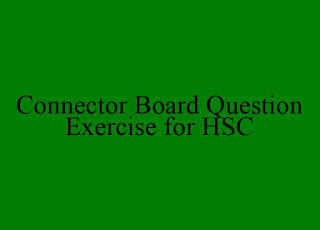My Last Duchess Bangla Summary
“My Last Duchess” কবিতায় পাশের রাজ্য থেকে রাজকন্যার বিয়ের প্রস্তাব নিয়ে একজন ম্যাসেঞ্জার (ঘটক) এসেছে। ডিউক তার সাথে কথা বলতে থাকেন। পুরো কবিতায় ঘটক কোনো কথা বলেনা, শুধু তার উপস্থিতি বোঝা যায়।
কবিতার শুরুতেই ডিউক ঘটককে একটি ছবি দেখান এবং জানান এটা তার লাস্ট ডাচেস (আগের রাণী)। এরপর তিনি তার ডাচেসের কর্ণনা দিতে শুরু করেন। ডিউকের মনে হয় এখনও যেন তার ডাচেস বেঁচে আছেন। তার চেহারার লাল আভা ছবিতে এখনও চোখে পড়ছে।
এই ছবিটি ফ্রা প্যানডল্ফ এঁকেছিলো। সেই চিত্রশিল্পী খুব সুন্দরভাবে ডাচেসের হাস্যোজ্জ্বল চেহারাটাকে ফুটিয়ে তুলেছে। বাস্তবেও ডাচেস আসলে এমনই হাস্যোজ্জ্বল ছিলেন। তিনি সবার সাথেই হাসি খশিভাবে কথা বলতেন।
তাকে ৯০০ বছরের পুরনো দামী হার উপহার দিলেও যেমন খুশি হতেন, একটা সামান্য চেরি গাছের ডাল দিলেও একইভাবে খুশি হতেন। কিন্তু সেটা ডিউকের পছন্দ ছিলো না। তিনি তাকে এ বিষয়ে অনেকবার সতর্কও করেছেন। তিনি ডাচেসকে বাড়ির চাকর বা নিচু স্তরের মানুষের সাথে নিচু আচরণ করার পরামর্শ দিতেন।
কিন্তু তাতে ডাচেস নিজের পক্ষে যক্তি প্রদর্শন করতেন। তিনি সবার কাছেই সমান ছিলেন। এই কারণে ডিউক একটি কঠোর নির্দেশ দেন এবং ডাচেসের হাসি বন্ধ হয়ে যায়। অর্থাৎ তিনি ডাচেসের এই আচরণ মানতে না পেরে তাকে মৃত্যুদন্ড দেন। (যদিও কবিতায় সেটা স্পষ্টভাবে লেখা নেই)। এক্ষেত্রে ডিউকের মিথ্যা বংশমর্যাদা ও অহংকার প্রকাশ পায়। সেই সাথে প্রকাশ পায় ডাচেসের উদার ও মমতাময়ী চারিত্রিক বৈশিষ্ট্য।
এরপরে ডিউকের রাণী হবার জন্য কন্যার কি কি বৈশিষ্ট্য থাকা আবশ্যিক সেগুলো তিনি তুলে ধরেন। ডিউকের স্ত্রী হতে হলে কন্যাকে অবশ্যই সুন্দরী হতে হবে এবং বিয়েতে যথেষ্ট পরিমাণ যৌতুক দিতে হবে। নিজের আভিজাত্য প্রকাশ করতে তিনি আরেকটি দামী শিল্পকর্ম ঘটককে দেখান। অর্থাৎ তিনি বোঝাতে চান যে তিনি অনেক অভিজাত বংশের। তাই তাকে যথেষ্ট পরিমাণে যৌতুক দিতে হবে। এখানে ডিউকের লোভী মানসিকতা প্রকাশ পায়।
My Last Duchess Stanza by Stanza Summary
Lines 1-8: The Duke introduces his guest to his mansion in Ferrara and points to a portrait of his late wife, which he claims is still "looking as if she were alive". He instructs his guest not to pull the curtain on the painting. as he has been the only one to do so since his wife's death.
Lines 9-16: The Duke explains the context of the portrait, detailing that it was painted by the artist Frå Pandolf and that it captured the "spot of joy" (a blush) that came to his wife's cheek when the Duke himself spoke to her.
Lines 17-23: The Duke expresses his displeasure with his wife's easily pleased nature, suggesting that her "too soon made glad, too easily impressed" demeanor was a flaw. He mentions he found it difficult to praise her for such things, using a rhetorical question to emphasize his disdain.
Lines 24-31: The Duke describes how his wife's innocent delight in a setting sun, a simple flower, or even a ride on his own "dappled ass" was seen as an embarrassing lack of decorum.
Lines 32-45: He emphasizes that his attempts to correct her behavior were futile, and he decided to put an end to the "trifling" that was beneath him. He then reveals that he commanded her to be killed.
Lines 46-56: The Duke concludes by showing the emissary a second artwork: a bronze statue of Neptune taming a horse, sculpted by the fictional Claus of Innsbruck. He invites the emissary to join the other guests, implying they are headed to meet the envoy's master and deliver the arranged marriage.


